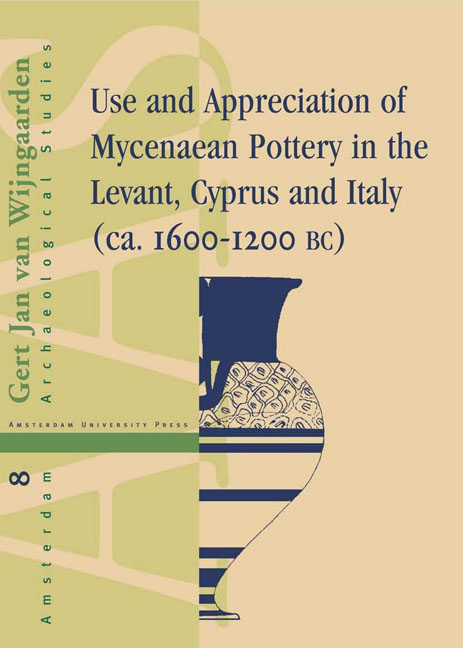1 - The Argument
Published online by Cambridge University Press: 10 February 2021
Summary
PURPOSE OF THIS STUDY
In this book, I aim to investigate the variations in the cultural significance of the imported Mycenaean pottery in the Levant, Cyprus and the central Mediterranean. Such pottery has been widely distributed in almost the whole Mediterranean. This body of material constitutes one of the archaeological sources by which to study relationships between the Aegean and other areas in the Mediterranean. As such, it has served as evidence for Mycenaean colonisation and commercial preeminence. The same body of evidence, however, has also been used to dismiss the importance of long-distance trade for the Mycenaean world. In my opinion, such a variability of interpretations on the basis of the same archaeological data has been possible because the role of Mycenaean pottery in international exchange during the Late Bronze Age is not properly understood. That role is dependant on the different patterns of consumption in the various areas where these ceramics have been imported. The main purpose of this research is to identify and compare these patterns of consumption for the three Mediterranean areas which have yielded the largest quantities of Mycenaean pots: the Levant, Cyprus and the Italian area.
THE AEGEAN BACKGROUND
On the mainland of Greece, at the end of the Middle Bronze Age, substantial changes are visible in the archaeological record, which have to do with an increase in social complexity. The most obvious examples of these changes are the Shaft-Graves in Mycenae, which are indicative of marked social stratification. In the succeeding periods, increasing centralisation resulted in the development of the Mycenaean palaces, of which those at Mycenae, Tiryns, Pylos and Thebes are the most notable. These palaces can be understood as centres which managed to control and monopolise specific aspects of society, such as the flow of goods and craft production, as well as military and various ceremonial activities. Increasingly, however, it has become clear that the palaces were never able to control the whole economy and it is likely that goods were produced and distributed outside the influence of the palatial centres. The Mycenaean palaces were eventually all destroyed and not rebuilt.
- Type
- Chapter
- Information
- Use and Appreciation of Mycenaean Potteryin the Levant, Cyprus and Italy (1600-120O BC), pp. 1 - 8Publisher: Amsterdam University PressPrint publication year: 2002



